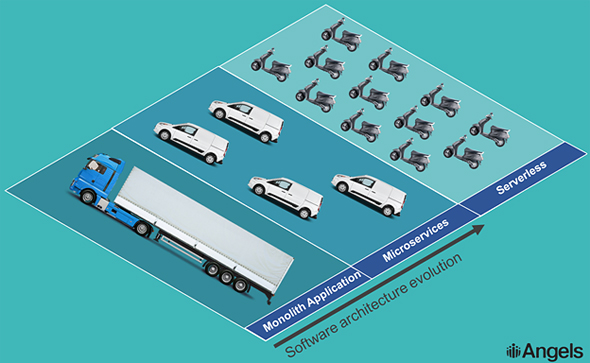
Opinion
Serverless Computing Is a Paradigm Shift for Cloud Computing
The serverless revolution is akin to delivery companies moving away from owning large trucks to managing a fleet of leased vans, and from there, to outsourcing transportation to a third-party fleet of scooters
Avi Arnon | 15:07, 02.07.18
The ever growing expectation of customers for great software products has brought companies to increase their rate of code deployment and adopt a new “microservices” approach to software development. This approach involves splitting a software application into pieces that can be independently updated in quick release cycles, meeting the consumer’s desire for increasingly sophisticated digital experiences delivered at speed.
For daily updates, subscribe to our newsletter by clicking here.
That said, in the past year we have seen companies taking microservices to the next level with the advent of serverless computing, which marks a paradigm shift in the world of software development.
One of the first to introduce and subsequently revolutionize cloud computing was Amazon with their AWS Serverless platform launched in November 2014. AWS is an event-driven cloud computing model in which the cloud provider manages the allocation of machine resources. In this model the company does not have to rent and maintain servers, merely deploy their code to the serverless platform, leaving the rest to cloud vendor Amazon. Using the delivery industry as an analogy, this serverless revolution is akin to delivery companies moving away from owning large trucks to managing a fleet of leased vans, and then, realising that their operation could be more agile yet, adopting an outsourced transportation service that consists of a fleet of speedy scooters managed by a third party. The benefits of this new software development approach are that it massively simplifies deployment and reduces the need for system administration, or a transportation manager, to continue the analogy. As a result, by removing the burden of server management in favor of relying on the cloud vendor to manage the infrastructure, developers can deliver more quickly, decreasing time to market and accelerating innovation. An advantageous pricing model for startups An additional key benefit of adopting a serverless platform is its pricing model, which is not based on the number of servers used but on the number of resources consumed by the application. If there were no users, the company wouldn’t be charged. This new concept is especially important for startups as it aligns the recurring revenue with the recurring cost, helping small companies to optimize their cost structure at an early stage, even before reaching scale.Opening up opportunities for increasingly disruptive business models
From a business perspective, serverless technology doubles down on the software as a service (SaaS) business model, as it allows companies to have a more granular level of unit economics based on a user’s interaction with applications. This lays the foundation for new disruptive services that take into account cost, speed, quality of service, and additional metrics that are yet to be unlocked. Early signs of large-scale adoption As serverless architecture is an event-based computing system, it has become an attractive option for companies using it for automated backups, customized log analysis, and the operation of serverless mobile and web websites. Some of the big unicorns including Airbnb, Netflix, and Expedia have already migrated their infrastructure to a serverless setup, and we are seeing many more moving down the same path. Looking forward, we see serverless technology being the driving force behind many emerging tech trends, including API-driven platforms, facilitating voice-operated systems, internet of things (IoT) applications, and even blockchain technology applications where serverless could power off-chain transactions for the execution of smart contracts. Like all new technologies, serverless architecture is not without its challenges. Currently, the ecosystem that supports this distributed architecture is missing essential tools and capabilities that could reduce the barrier to entry, especially for larger organizations. But what we consider to be the most exciting thing on the horizon, is for this growing ecosystem to help facilitate new business models that weren’t previously feasible.Related stories
Just as the cloud revolution enabled WhatsApp to reach billions of users and be acquired by Facebook for $19 billion with only 55 employees, if we’re to see a single digit employee startup with a billion users and a multi-billion dollar valuation, it will probably be built on serverless.
Avi Arnon is an associate in the investment team of iAngels, a Tel Aviv-based venture capital and co-investment firm.

No Comments Add Comment